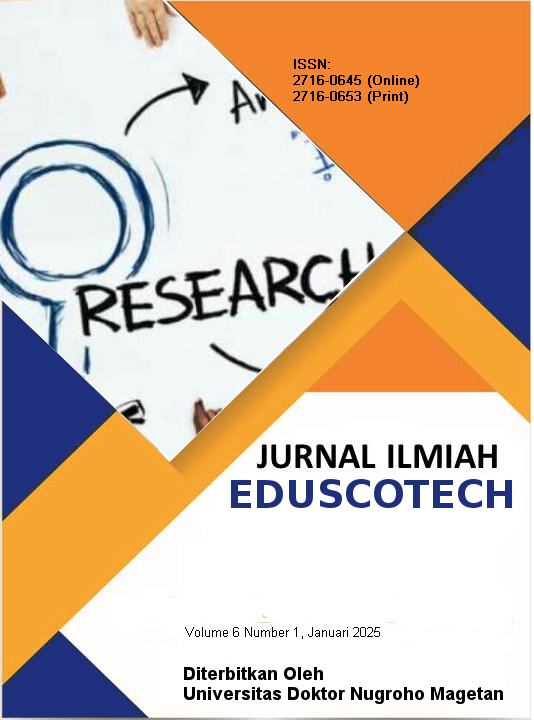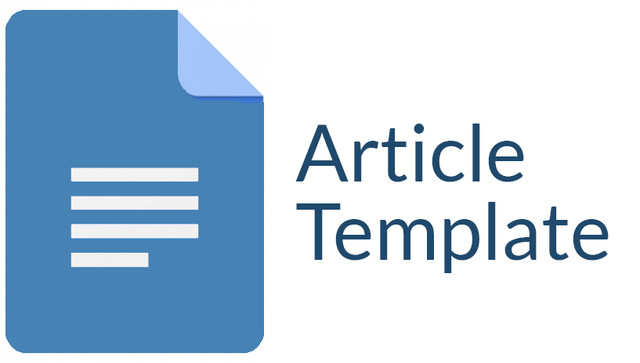Analisis Seismik Dalam Perancangan Bangunan Di Lahan Tanah Labil Tanah Bergerak
Keywords:
Seismic analysis, unstable soil, seismic- resistant systemAbstract
This study analyzes the seismic design of buildings on unstable or moving soil, focusing on the Mojowarno area, Jombang, which is at risk of liquefaction during an earthquake. The method used is numerical analysis with PLAXIS software for geotechnical analysis and ETABS for structural design. The results show that the design of deep foundations, such as pile foundations, along with the implementation of appropriate seismic-resistant systems, is effective in reducing the risk of liquefaction and structural damage due to earthquakes. A safety factor ranging from 1.5 to 2 is recommended to ensure soil stability and structural reliability. Proper soil selection and analysis of soil characteristics are crucial in determining the building's resilience in seismic-prone areas. The study recommends the use of shear walls and additional structural reinforcements to enhance the building's resistance to seismic forces. With deep foundation design and proper reinforcement systems, buildings can be maximally protected from earthquake shaking and liquefaction. The main contribution of this research is to provide guidance for earthquake- and liquefaction-resistant building design, enriching knowledge on design strategies for areas with unstable soil. The findings are expected to serve as a reference for safer building designs in similar areas.
Downloads
References
Suwarno, A., & Setiawan, J. (2019). "Mitigasi Deformasi Tanah pada Infrastruktur di Daerah Tanah Labil." Jurnal Teknik Infrastruktur, 13(2), 120-135.
Hartono, I., et al. (2020). "Pengaruh Deformasi Lateral Tanah terhadap Struktur Bangunan di Wilayah dengan Tanah Labil." Jurnal Teknik Sipil, 15(4), 210-222.
Yuliana, S., et al. (2022). "Pemantauan Pergerakan Tanah di Area Rawan Likuifaksi Menggunakan GPS dan Analisis Numerik." Jurnal Rekayasa Geoteknik, 20(2), 134-145.
Adebayo, O., et al. (2020). "Biochar as a Sustainable Material for Construction: Review of Recent Studies." Construction and Building Materials, vol. 264, 2020, 120819.
Rochmawati, T., et al. (2018). "Analisis Deformasi Tanah pada Kawasan dengan Potensi Likuifaksi di Daerah Pesisir." Jurnal Geoteknik, 19(3), 203-215.
Boulanger, R. W., & Idol, W. S. (2015). "Liquefaction-Induced Lateral Spreading: A Critical Review." Journal of Geotechnical and Geoenvironmental Engineering, 141(10), 04015061. DOI: 10.1061/(ASCE)GT.1943-5606.0001335
Kiyono, J., & Masuda, K. (2018). "Seismic Design of Buildings on Liquefiable Ground." Journal of Earthquake Engineering, 22(5), 941-958. DOI: 10.1080/13632469.2017.1359563
Liu, L., & Li, J. (2020). "Soil Liquefaction Assessment under Seismic Loading." Journal of Geotechnical and Geoenvironmental Engineering, 146(4), 04020015. DOI: 10.1061/(ASCE)GT.1943-5606.0002244
Suwarno, A., & Setiawan, J. (2019). "Mitigasi Deformasi Tanah pada Infrastruktur di Daerah Tanah Labil." Jurnal Teknik Infrastruktur, 13(2), 120-135.
Hartono, I., & Suryanto, B. (2020). "Pengaruh Deformasi Lateral Tanah terhadap Struktur Bangunan di Wilayah dengan Tanah Labil." Jurnal Teknik Sipil, 15(4), 210-222.
Adebayo, O., et al. (2020). "Biochar as a Sustainable Material for Construction: Review of Recent Studies." Construction and Building Materials, vol. 264, 2020, 120819.
Yuliana, S., et al. (2022). "Pemantauan Pergerakan Tanah di Area Rawan Likuifaksi Menggunakan GPS dan Analisis Numerik." Jurnal Rekayasa Geoteknik, 20(2), 134-145.
Rochmawati, T., et al. (2018). "Analisis Deformasi Tanah pada Kawasan dengan Potensi Likuifaksi di Daerah Pesisir." Jurnal Geoteknik, 19(3), 203-215.
Suwarno, A., & Setiawan, J. (2019). "Mitigasi Deformasi Tanah pada Infrastruktur di Daerah Tanah Labil." Jurnal Teknik Infrastruktur, 13(2), 120-135.
Downloads
Published
Issue
Section
License

This work is licensed under a Creative Commons Attribution-ShareAlike 4.0 International License.
Authors who publish with this journal agree to the following terms:
1. Copyright on any article is retained by the author(s).
2. The author grants the journal, right of first publication with the work simultaneously licensed under a Creative Commons Attribution License that allows others to share the work with an acknowledgment of the work’s authorship and initial publication in this journal.
3. Authors are able to enter into separate, additional contractual arrangements for the non-exclusive distribution of the journal’s published version of the work (e.g., post it to an institutional repository or publish it in a book), with an acknowledgment of its initial publication in this journal.
4. Authors are permitted and encouraged to post their work online (e.g., in institutional repositories or on their website) prior to and during the submission process, as it can lead to productive exchanges, as well as earlier and greater citation of published work.
5. The article and any associated published material is distributed under the Creative Commons Attribution-ShareAlike 4.0 International License









